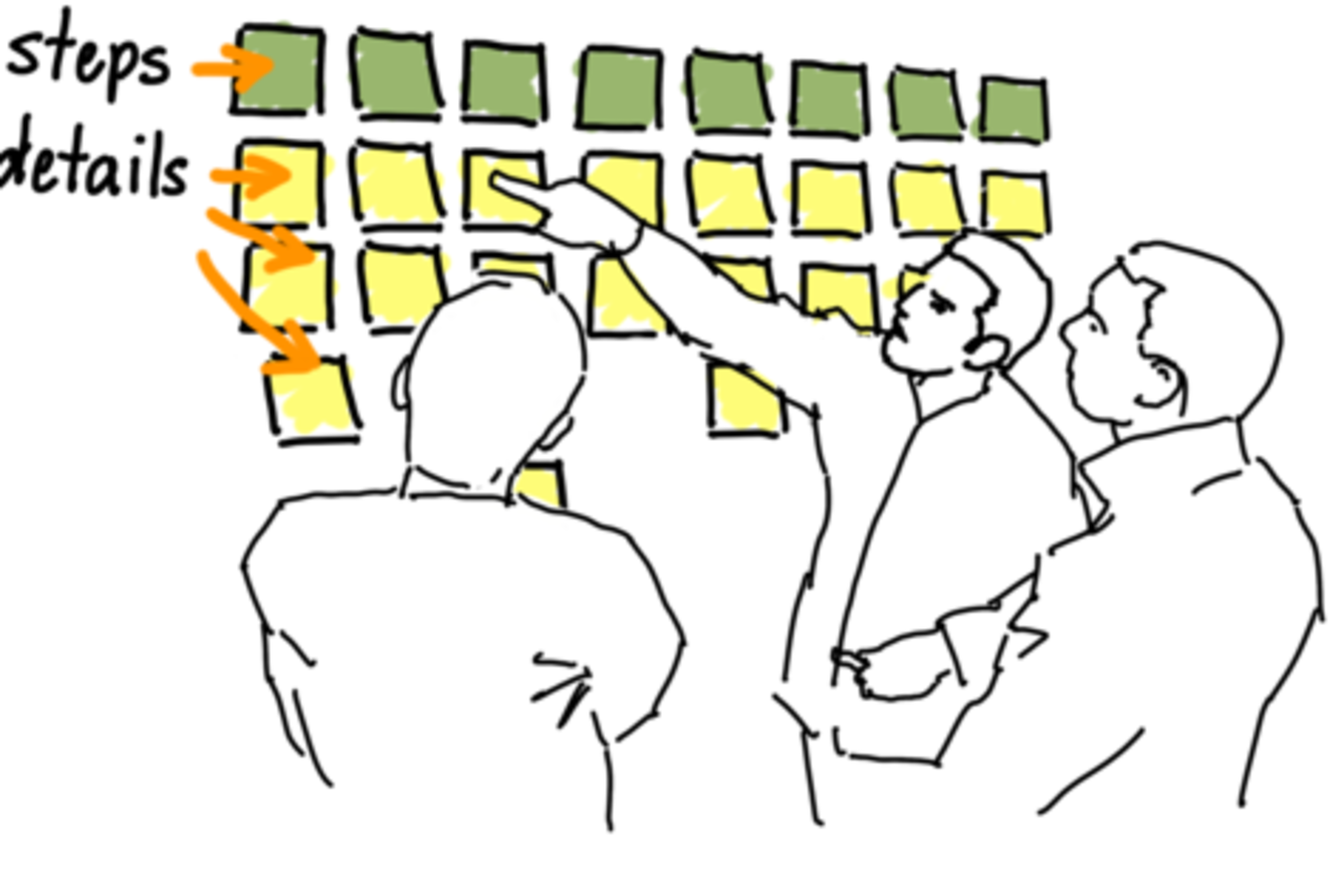User story mapping is a powerful tool developed by Jeff Patton that I’ve often employed in IT contexts. With a user story map, you outline the steps of a user journey in your system and detail each step below (see the image below for a better understanding).

While this tool is excellent, one aspect I always struggle with is the incremental fleshing out of details.
I’d like to share an experience when we applied user story mapping to a non-IT situation, shedding light on what incremental truly means.
Earlier this year, my family and I relocated to a new apartment. Planning the move, a Herculean task as always, prompted me to leverage my nearly 15 years of agile experience. User story mapping crossed my mind.
We had the unique advantage of having access to the new apartment two months before vacating the old one. Ample time for the move, right?
We began by listing the rooms in the new apartment at the steps level, akin to features in a software setting.
Our user story map depicted rooms at the top, with detailed lists of items for each room below. For instance, the boys’ room needed to accommodate many boxes of toys, beds, and wardrobes.
While this provided visibility, it didn’t facilitate move planning. The multitude of tasks left us worried about overlooking critical details amidst the chaos of moving.
Reflecting on the essence of user story mapping, particularly its planning phase, sparked an insight. By segmenting the detailed items into incremental versions of finished rooms, we could plan more effectively.
We devised three incremental releases, each with increasing completeness:
- What do we need for a single night?
- What do we need for a weekend trip?
- What do we need for a year-long stay?
These incremental releases mirrored the complexity and completeness of our move, suiting our two-month timeline. Now, we could distribute tasks into smaller, manageable increments.
For example, we deliberated on what items were essential for a single night’s stay in the boys’ room, gradually expanding our checklist for longer durations.

Color-coded dividers on the board delineated these incremental releases. Everything above the green divider represented items necessary for that phase of the move in each room.
Recalling the user story mapping caveat, we ensured details were incrementally refined. We adopted the principle of “What is the smallest thing that could possibly work?” to guide our planning.
This approach facilitated practical discussions, ensuring only essential items were considered for each phase.
Conclusion
User story mapping proved invaluable, enabling us to envision incremental versions of each room’s setup. While we couldn’t execute the move exactly as planned due to logistical constraints, the exercise provided a comprehensive overview of our tasks.
Naming the releases forced us to consider incremental versions of room completeness. This structured approach simplified planning, making it easy to prioritize tasks for each phase.
We even identified redundant items that didn’t warrant year-long occupancy and disposed of them.
This experience highlighted parallels between user story mapping in personal and software contexts. Naming releases aids in envisioning incremental development stages, streamlining planning efforts.
I hope you found this personal anecdote intriguing.